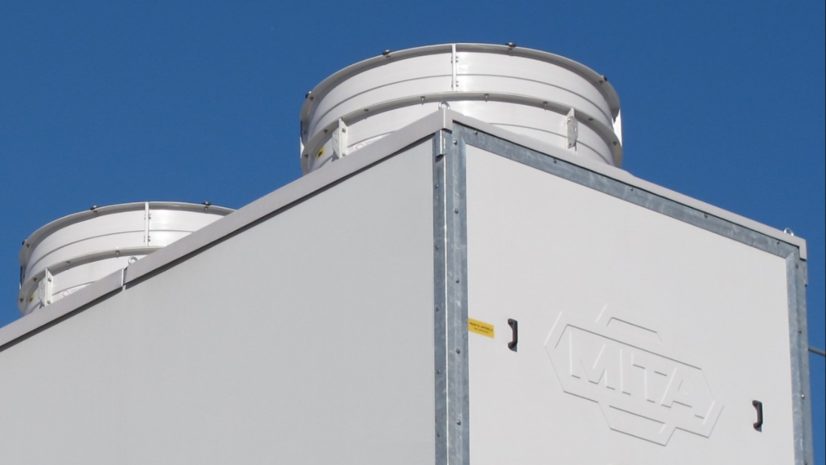Cooling Technologies and Industrial Noise Management

Most industrial plants also include various types of cooling systems in addition to the actual production part: evaporative towers or condensers, dry coolers, adiabatic coolers, chillers, etc. In some cases, this equipment must comply with stringent noise limits, especially in relation to their power and size. Current technology enables us to achieve optimal sound levels: therefore, it is essential to know the calculation criteria well.
by Giorgio Lorenzetti, Technical Advisor
1. Noise management in cooling technologies: variables to consider
The systems specified above have a well-defined dimensional mass calculation: this way the sound power level must also take into account the emission surface of the equipment itself.
European standard EN ISO 3744 specifies the criterion to use to calculate the sound power level of machinery with measurable dimensions “X, Y, Z”. According to this standard, a series of sound pressure measurements must be performed at points with equivalent distances from the equipment: thus a weighted average is obtained; then the logarithm of the surface of the same equipment has to be added to this average. As a result, we get the calculated sound power level.
The sound power data of the equipment thus calculated can be useful to Customers or Consultants to forecast the acoustic impact of new installations. The presence of background noise, possible obstacles or reflective walls, and the noise produced by other machinery in the surrounding area must be taken into account in this measurement.
The sound pressure value at a certain distance is frequently requested to manufacturers. The value could be incorrectly interpreted. In fact, the standard specifies that the equipment to calculate the sound power level must be installed “on a flat reflecting plane in an environment that approximates to an acoustic free field”: therefore, it is clear that any sound pressure value supplied cannot be found in a condition different from that calculated theoretically.
2. Noise management: some practical examples
Here are some cases that a trained technician must be able to deal with.
- Sound pressure is requested at a certain distance. In this case, starting sound power value is calculated as if the source were point-shaped: i.e. the incidence of the emission surface is neglected. The required sound pressure values are almost always within 15 meters of distance, i.e. the limit within which the emission surface must always be considered.
- Sound pressure is required (perhaps very low) at a certain distance starting from a correctly calculated sound power. We know that the value supplied will not have any real confirmation due to the presence of obstacles or other relevant noises. In practice, we know that this is not in “free field” and not “in the absence of background noise” as the standard required).
- Sound pressure data is requested basing on a sound power value; in this case, this is calculated in a different way than the European standard mentioned above.
3. In conclusion
All these interpretative variables lead to differences, which can be significant when the Manufacturer must provide a noise value consistent with reality.
As already mentioned, the sound and correct practice would be to supply the sound power level of the equipment calculated according to EN ISO 3744; then, this value is to be used to derive the impact that it can determine once the machine is placed in the installation site.
Resources
Best practices
Read all Pieces of Advice by MITA Cooling TechnologiesWhat to Know
Find Out All Technical TermsTechnical Articles
Read All our Technical ArticlesNewsletter
Subscribe to MITA newsletter and stay updated on technical solutions for industrial and civil cooling and get to know our offer.